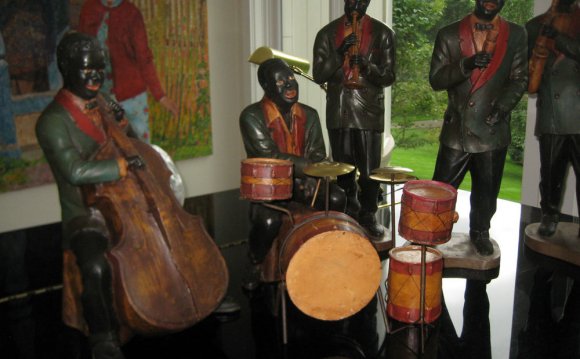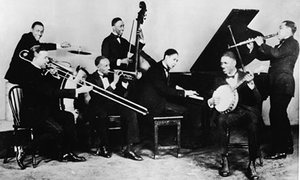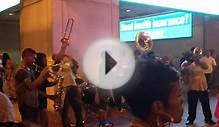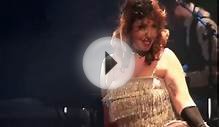
 American jazz pianist and composer 'Jelly Roll' Morton plays piano with his band The Red-Hot Peppers in 1926. Photograph: Metronome/Getty Photographs
American jazz pianist and composer 'Jelly Roll' Morton plays piano with his band The Red-Hot Peppers in 1926. Photograph: Metronome/Getty Photographs
Stephen Poliakoff's drama Dancing in the Edge, which begins on Monday 4 February on BBC2, tells the storyline of a multiracial jazz musical organization finding fame in London in the early 1930s. Led by a Brit, Louis Lester, the musical organization show a runaway hit using hard-partying aristocracy – royalty, also – until power battles and racism, class and intercourse, churn up the waters of these briefly luxurious voyage.
Once Poliakoff's story opens in 1932, Uk audiences will have known of The united states's quantum step into jazz for fifteen years or more. From prior to the first world war, jazz's parents – ragtime and the blues – had usually supplied the soundtrack the brand-new fashions in personal dancing. A trickle and a flood of American documents for recently designed phonograph, in addition to existence folks soldiers in Europe, forced the process on.
American jazz bands had been soon boarding steamships and at risk of Britain. The all-white Original Dixieland Jazz Band – went to in 1919, 2 yrs once they released the initial genuine jazz record. The recording ended up being prompted because of the noises of African-Americans musicians they had heard in brand new Orleans and Chicago. The ODJB remained for a year. For the reason that time they played the Hammersmith Palais, the Palladium and elsewhere, and had been even summoned for a command performance at Buckingham Palace because of the jazz-loving Edward, Prince of Wales. The prince's passion when it comes to music ended up being a vital influence on high society, as detail by detail in Poliakoff's series. The classically impacted American "symphonic" jazz musical organization, the Southern Syncopators Orchestra, additionally arrived in 1919. They played a high-profile tv show in the Royal Albert Hall to mark the first anniversary associated with Armistice.
The all-white first Dixieland Jazz Band revealed the initial genuine jazz record. Photo: Gab Archive/RedfernsBecause of the end associated with the jazz age the 1920s, British listeners utilizing the interest may possibly also have heard a few of the greatest jazz documents available. Included in these are Louis Armstrong's blazing Hot Five and Hot Seven sessions of 1926-28, and pioneering larger-ensemble songs from Jelly Roll Morton and Duke Ellington. There clearly was also a British jazz fan's newspaper, of kinds, the eccentric but enthusiastic Melody Maker, launched in 1926.
At first, Melody Maker's waywardly opinionated editor Edgar Jackson endorsed a highly organized and stylish type of smooth jazz (the music that would actually have dominated the high-society world of 1932) ahead of rougher, improvisational works from brand new Orleans he currently regarded as "dated". Record, of course, came to treat the latter as classics and consigned the majority of the smooth forms to oblivion, but Melody Maker was however a symbolic arrival, confirming jazz songs's now unshakeable existence regarding the chart.
Stanley, Poliakoff's fictional songs reporter and tireless lobbyist for musical organization is, nevertheless, a far cry from a few of the correspondents in the very early Melody Maker. These included musician Bert Ralton, just who blogged into the February 1926 concern: "Rhythm alone, as we all know, is inadequate to fulfill the informed ear, while the advent associated with the white guy into Jazz marked the commencement of the battle to perpetuate the spirit of negro rhythm, as well as once introduce and maintain the countless other attributes which the great classical masters have indicated united states becoming songs."
Dancing On The Edge's music director Paul Englishby (a movie and theater composer and periodic big-band frontrunner fascinated by 1930s swing) and composer and former drummer Adrian Johnston, made no key of creating music for Louis Lester's band this is certainly method in front of where any London jazz ensemble, black colored or white, would-have-been at that time. Johnston features recommended that they wanted to reflect the harmonically sophisticated, sensually swung Duke Ellington experience of later 1930s, perhaps not the raw and clunkier early jazz noise.
Jazz greats Duke Ellington and Louis Armstrong fulfill at ny's Madison Square outdoors in 1970. Photograph: APIt's not hard to see why. Later on Ellington seems contemporary, the earlier music interesting but archaic. They could not have are making the fictional group play with the fire and urgency of a 1920s Armstrong band, often. Brit jazz fans and artists understood those documents, but no neighborhood musicians could have fun with that freedom and technical guarantee.Then once again, with the exception of Sidney Bechet, nor could the majority of the Us Citizens who had been checking out London because the first world war≠. The newest Orleans clarinet and soprano-sax genius had arrived at Britain with all the Southern Syncopators Orchestra in 1919 and stayed in London – playing, training, and often carousing – until his deportation in 1922.
The British jazz historian Val Wilmer, who has got made a detailed study of this lifetime of the glamorous Caribbean performer and bandleader Ken "Snakehips" Johnson (one of the models for Poliakoff's composite, Louis Lester), points out your famous first Dixieland Jazz Band check out, usually taken whilst the first of live US jazz in Britain, had its precedents.
"A Jamaican pianist labeled as Dan Kildare was working the house band at Ciro's, an upmarket dancing club into the West End, through the very first World War years, " Wilmer states. "When it ended up being closed because of the authorities, a few of the band continued the road as a group labeled as the Seven Spades – and their drummer was Louis Mitchell, a black US vaudeville artist just who eventually settled in France. But this music wasn't hot jazz like Louis Armstrong's or Sidney Bechet's – it absolutely was a-dance songs with a ragtime feel."
INTERESTING VIDEO











